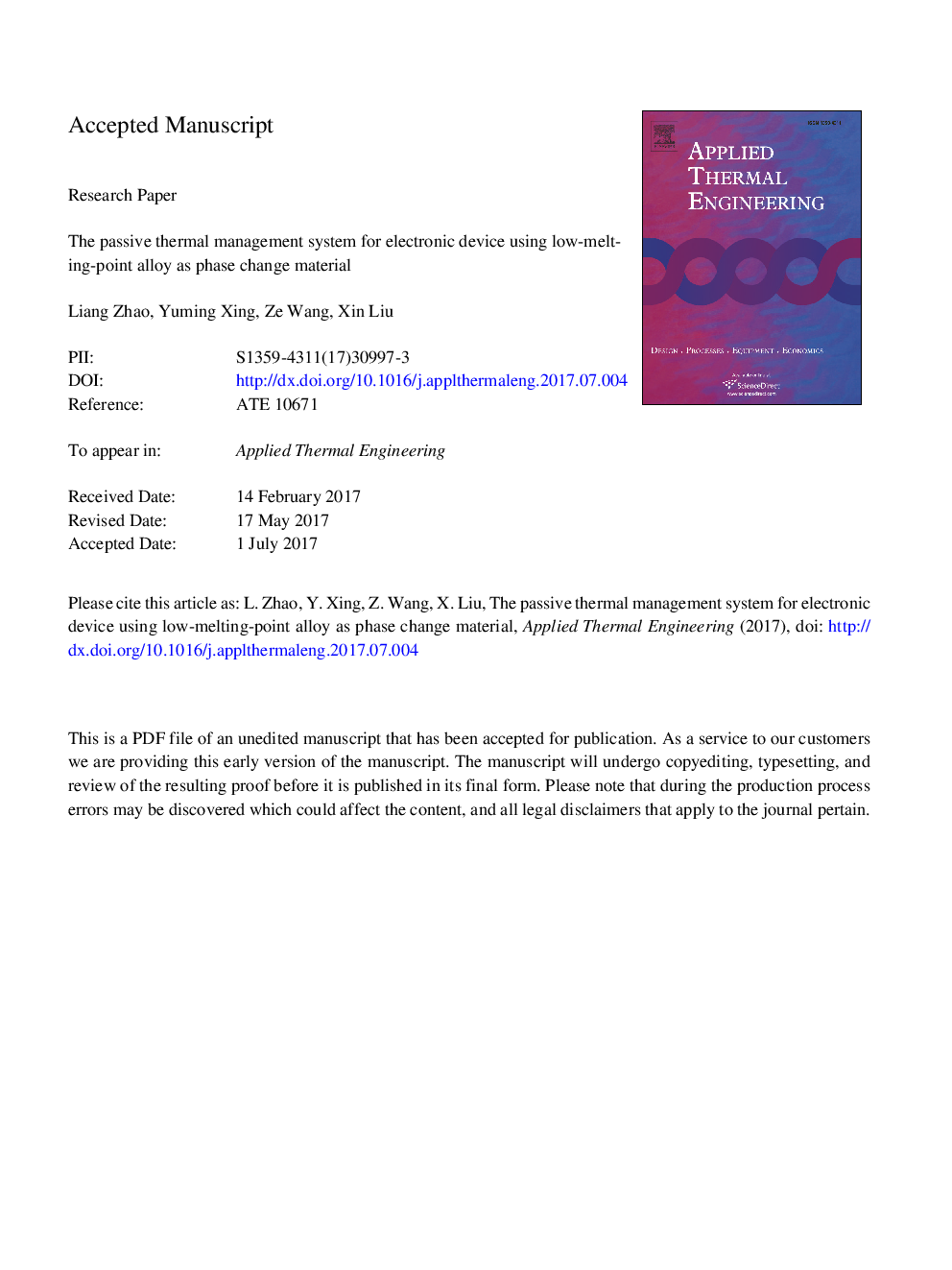ترجمه فارسی عنوان مقاله
سیستم مدیریت حرارتی غیر فعال برای دستگاه الکترونیکی با استفاده از آلیاژ نقطه ذوب پایین به عنوان ماده تغییر فاز
عنوان انگلیسی
The passive thermal management system for electronic device using low-melting-point alloy as phase change material
| کد مقاله | سال انتشار | تعداد صفحات مقاله انگلیسی |
|---|---|---|
| 136698 | 2017 | 31 صفحه PDF |
منبع

Publisher : Elsevier - Science Direct (الزویر - ساینس دایرکت)
Journal : Applied Thermal Engineering, Volume 125, October 2017, Pages 317-327
ترجمه کلمات کلیدی
مواد تغییر فاز آلیاژ نقطه ذوب پایین مدیریت حرارتی، پودر طبیعی فوم کربن،
کلمات کلیدی انگلیسی
Phase change material; Low-melting-point alloy; Thermal management; Natural convection; Carbon foam;

